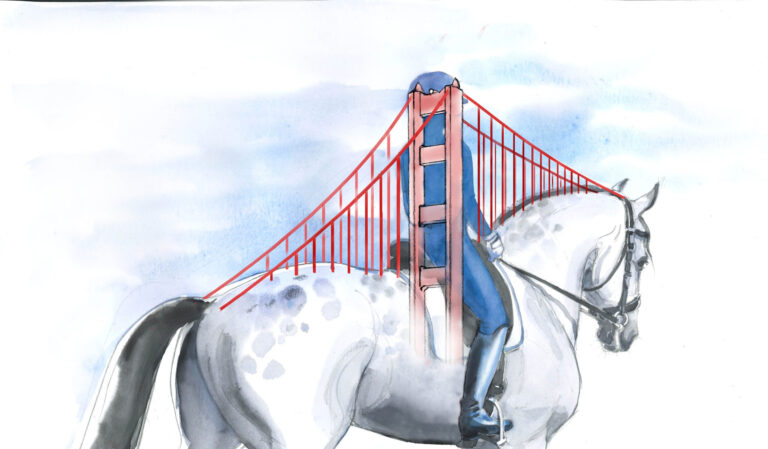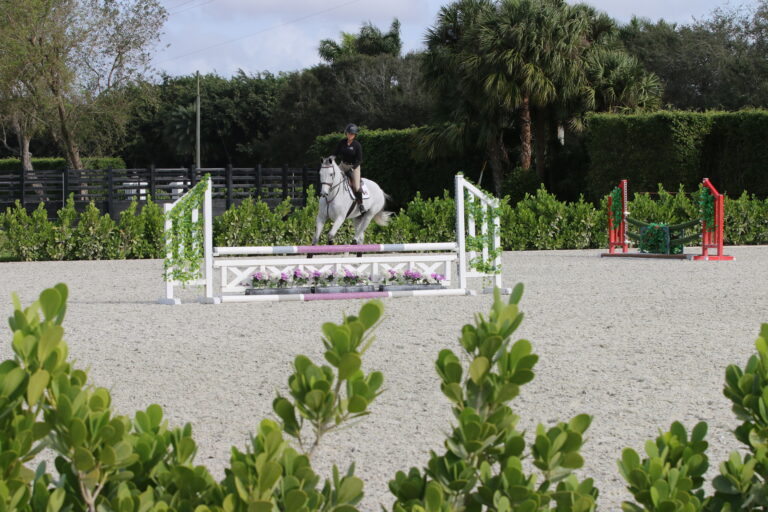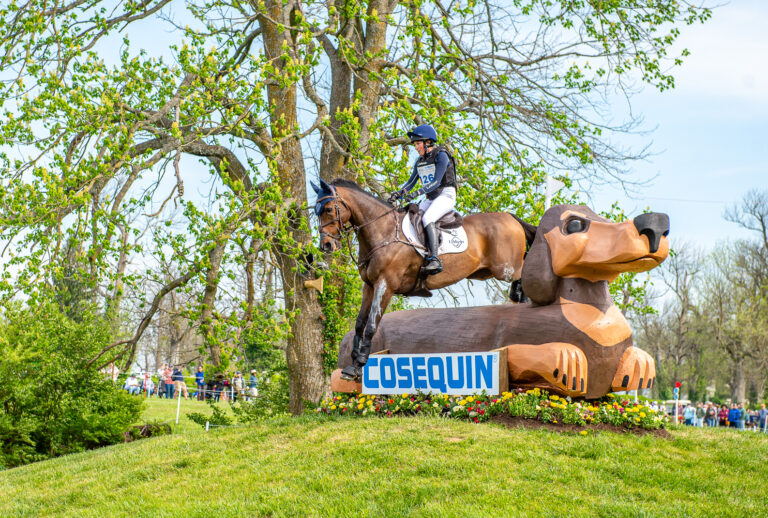Learning to ride is like peeling an onion by hand. You can peel only one thin layer at a time, it will take you a long time to get to the central part … and there will be a lot of tears in between. But the sensation you get when you peel off one more layer and understand for the first time something new about horses and riding is what keeps horsemen coming back for more. And when you get to the essential core? That’s just one horse … now you must start peeling the layers on a new horse, hoping to get to the center of him as well. That means more tears, yes, but more enlightenment as well.
It has been a while since we have talked, so I want to tell you where my mind has been wandering recently. I partly view myself as a translator, explaining to the horse what his rider actually meant by that aid, then telling the rider what her horse meant by his reaction to it. Naturally, a lot gets “lost in translation,” but that is part of the process, and I’m used to it. Thinking about translation in this light, however, led me to realize that a great deal of our riding theory has been translated from other languages, and it is possible that what we sometimes think we hear is different from what was said in a different language. For example, take your seat bones.

Courtesy, Jim Wofford
Seat Bones Connected to the …?
Have you ever been told to “drive with your seat bones”? I have … and I’ve even tried to do it, but it doesn’t work. Let me explain by using a simple demonstration. For this exercise you’ll need a friend on the ground for safety reasons because you will give up all control for the moment and if your horse is suddenly startled, I need someone there to restrain him while you are in a slightly precarious position. With your friend directly in front of you, I want you to halt, drop your stirrups, drop your reins, cross your arms, and lift both straightened legs perpendicularly away from the saddle. Once you do this, I think you will agree you are connected with your horse entirely with the pressure on your two seat bones and your pubic bone.
Now then, without using any other aids (no voice, moving your leg or waving your upper body), make your horse walk forward by “driving with your seat bones.” Go ahead … I’ll wait. After a while you will realize that you can press on your seat bones all you want, but your horse does not recognize that as an aid to go forward.
Try a different aid. With your arms still crossed and your knees still off the saddle, quietly reach in with both heels at the girth and ask your horse to walk forward. Chances are he will step up to your safety monitor/friend and ask her for treats.
My point with this exercise is to show you that we can’t really “drive with our seat bones.” (Although one instructor told me to sit heavier in the saddle, so I ate a five-pound chocolate chip cookie, and that kind of worked.) Yet, I am sure all of us have been told to drive with our seat bones at one time or another.
I view the term as something that was brought over in the 1950s, as foreign instructors started to appear on the scene and teach in English, which was to them a second language. I have searched our foundational readings (Müseler, Decarpentry, d’Endrödy, Podhajsky, Chamberlin) and cannot find “drive with your seat bones” in any of their books. Something has been lost in translation, and I’m convinced it was first said by someone who meant for the rider to feel their seat bones moving in rhythm with the horse’s back.

Courtesy, Jim Wofford
Prisoners of Translation
When you think about it, we are continually trying to get our horse stronger in his back to produce more suspension in his paces … or his jump, for that matter. Why in the world would you drive down on something you are trying to get to lift up? I agree our seat bones have a role to play in our communication with our horse. They can follow, they can lead, they can influence—but they should not drive down.
In my opinion, too much importance is placed on our seat bones and not enough on our backs. Experts such as d’Endrödy (who spoke of “retarding” horses with our backs) and Müseler (who spoke of “bracing” the back) have discussed the role of the rider’s back in the training of the horse. Once again, however, we are the prisoners of translations, dealing at one remove from our original source documents. In fact, Müseler’s translator, F.W. Schiller, speaks of this difficulty in the 1937 foreword to Riding Logic—that there is no concise translation for Müseler’s original German phrase regarding the use of the back, das Kreuz anziehen.
I agree our seat bones have a role to play in our communication with our horse. They can follow, they can lead, they can influence—but they should not drive down.
Jim Wofford
I looked it up, using a computer translation program, and the closest my computer could come was “carrying the cross.” I suppose if we think of the rider’s spine as the long arm of a cross and the shoulders as the crosspiece, while the spine is carrying the weight, we get close to the original meaning…but not really. For me, the concept of retarding the motion comes closer, but I have recently stopped using the term “half-halt.” When we retard the horse’s motion, the last thing in our mind should be any version of halting, but rather rebalancing, pausing, allowing the horse to take a “mental breath” while regathering his forces in anticipation of using them again.

Courtesy, Jim Wofford
Getting Your Back into It
Before we start to discuss using your back, I need to define the three shapes of the human spine I think are necessary while riding. Viewed from the side, the natural shape of the human spine is a mild “s” curve, with the forward portion at the waist facing the front. I insist that my serious riders experiment with Pilates and yoga to maintain and retain the elasticity and control of the back needed for more sophisticated work in the saddle.
The easiest gait in which I can demonstrate the use of your back is the canter. Because your horse is on the (say) left lead, his left shoulder will be slightly in advance of his right, and your seat bones should mirror this with an emphasis on your inside seat bone. As your horse swings his interior lateral legs forward to complete a stride, your back should move from arched to straight. I disapprove of the rider’s back adopting a “roached” position (with the hips slightly in front of the waist), as that rider will soon need to grip with her knees, thus destroying the poised, grip-less balance I want her to develop.
Riders soon learn to be quite energetic during the forward swing of their horses’ back, but the retraction of their legs into the propulsive phase is equally important, and at this moment in the stride the riders should have the sensation they are picking up their horses’ feet and swinging them out the rear, using their back muscles, and over-arching their backs for that phase of the stride. The greater the swing to the rear, the greater the swing to the front in the next stride. Imagine you are sitting on a playground swing at the canter, and you’ll have it.
This is enough for you to experiment with, but it side-steps the “bracing,” or “retarding” function of the back I mentioned earlier. Now then: Settle your horse at a working trot sitting so that he is traveling sweetly. On a straight line, place both reins in one hand, and put your other arm behind your waist. Without pulling on the reins, take a deep breath and “do an isometric”—make your back and waist tight and carry that sensation down the outside of your thighs to your knees. Your lower legs and heels are not involved in this exercise yet. The bracing or retarding action should last for as long as your horse has one foot on the ground and then you should return to the former soft, sweet movement while you think about what you just felt. Your horse paused, didn’t he? Experiment with this exercise some more, switching the reins from one hand to the other, seeking as neutral a contact as possible, so that whatever effect you produce is derived from your back and not the action of the reins.
Once you can produce this slight pause in your horse’s action, it’s time to take advantage of the benefits. The point of my exercise is not to slow down your horse, but rather to put him in a receptive frame of mind along with improved mental and physical composure. With the reins now in both hands but retaining that neutral sensation (even if he is above the bit slightly), as soon as he responds to the retarding function of your back, your heels should close and you should ask for a bigger pace, one containing more energy and with increased air in his strides. Do not try to sustain this at first; be satisfied with a few good steps and make a fuss over your horse. He likes that. It is an oversimplification but think that the muscles of your back and the outside muscles of your thighs are used to rebalance and slow your horse, while the muscles of your back and the inside muscles of the lower leg are used to create and sustain forward motion.
To review: We adjusted the shape of your spine, highlighted the tightening of the abdominal and spinal muscles as an additional means of communication with your horse, and prepared him for increased forward activity. Increased forward activity is classically correct, but the result will be flawed if the actions of your lower leg are not applied correctly. First, your horse must be in front of your leg at all times. Gen. Chamberlin said, “the horse must think God’s on his back … and the Devil’s at his belly!”

Courtesy, Jim Wofford
Ask Just Once
The way most riders use their lower legs, their horses think they are flapping, not asking for more impulsion. If you use the same aid twice, you are not riding—you are nagging. Every aid you use must either increase or decrease with every step or stride. Your horse is a dynamic creature; you must be dynamic as well.
If you touch your horse with subtle pressure at the girth from the inside muscles of your lower leg, he should increase the activity of his hindquarters. If there is no response, close your heel at the girth without lifting it. Again, if no response, this should be immediately followed … in quick succession … by the engagement of the spur, and then, if necessary, a sharp tap with the whip immediately behind the heel. If you cannot immediately produce forward motion, you are wasting your time practicing any dressage movements. As an added suggestion, when you ask for more impulsion with your legs, make sure the muscular effort you engage in your back and legs does not accidentally transmit into your hands. Have a truly independent position.
When riders sense their horses are behind their legs, they ask for more impulsion. However, they typically use their lower leg incorrectly, which many horses will ignore. Being human, the rider will now apply a flawed aid repetitively expecting the horse to respond correctly. This is, of course, the definition of insanity. One of the greatest compliments we can pay a rider is to say, “She’s just sitting there.” Because such a rider truly rides with invisible aids, the horse appears to produce movements and transitions of his own volition. A performance such as this approaches excellence, yet if we could look back over that horse’s career, he would have taken very different shapes and produced very different responses early in his training.
If you use the same aid twice, you are not riding—you are nagging. Every aid you use must either increase or decrease with every step or stride.
Jim Wofford
Horses vary enormously in their natural response to our aids. I have had horses unnaturally sensitive to the slightest motion of my legs or equally sensitive to the slightest touch of the reins. We must understand those are not trained responses but rather instinctive reactions needing further training and education. We are riding something that feels a fly on his neck; it is up to us to teach our horses what our various touches mean for them to eventually respond to invisible aids.
By now, you should have been instructed in the three basic uses of leg aids, what I refer to as leg effects: first, both legs at the girth for impulsion; second, one leg at the girth for impulsion and/or bending; and third, one leg behind the girth to control or displace the hindquarters. Regardless of the state of training of your horse, you must always … always … start with the invisible aid. Most horses will not yet respond to the invisible aid, but they must be offered the opportunity. At the same time, you must be willing to act swiftly and determinedly to create forward motion. Apply an aid, then relax it and take a step or a stride to evaluate his response. If no response, a stronger aid is applied, possibly supported by spur or stick. Within a few steps, you will enforce your horse’s obedience to the pressure of your lower leg. His impulsion must increase immediately, and your release of pressure and a soft pat or murmur of approval must also occur immediately. Your horse seeks approval and reassurance. Teach him to respond to the slightest pressure and immediately praise him. He hears you—no translation needed.
Thanks to Clare and Tom Mansmann for the use of Destinaire Farm in Hume, Virginia.
About Jim Wofford

Based at Fox Covert Farm, in -Upperville, Virginia, Jim Wofford competed in three Olympics and two World Championships and won the U.S. National Championship five times. He is also a highly respected coach. For more on Jim, go to jimwofford.blogspot.com.
This article originally appeared in the Spring 2022 issue of Practical Horseman.











